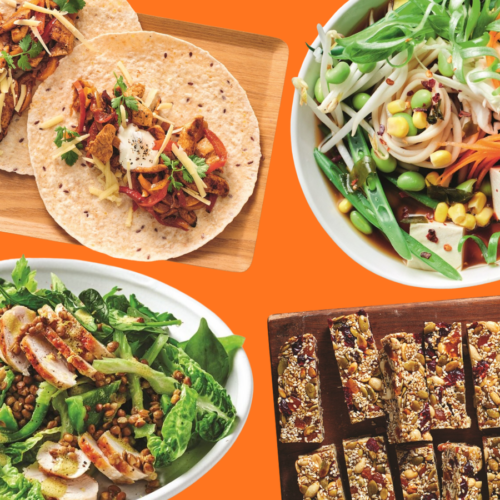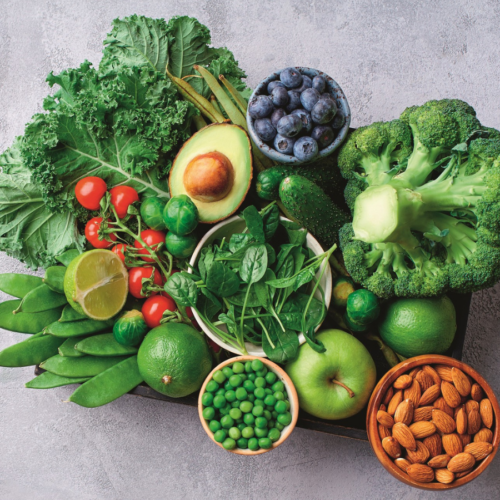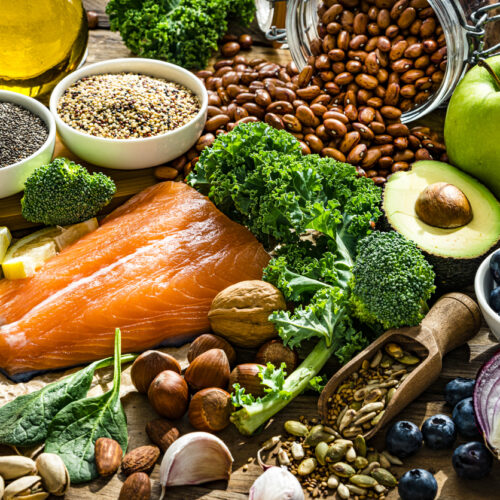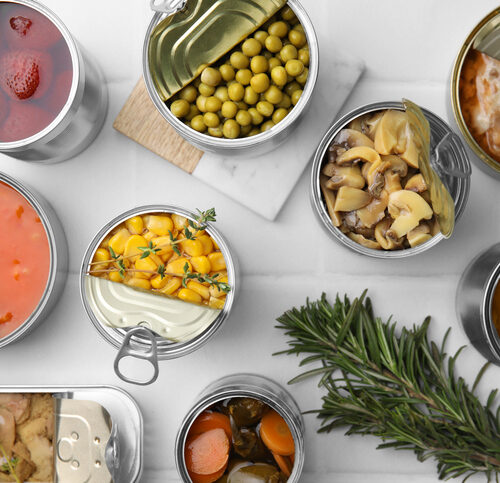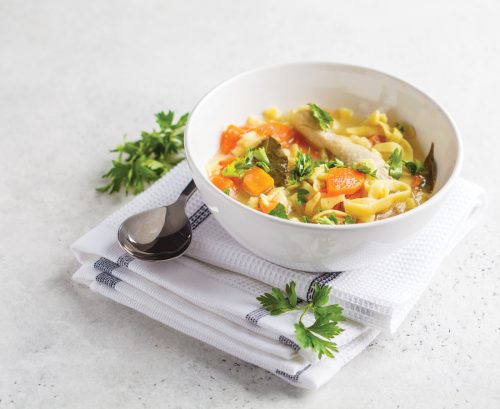
Umami is savoury deliciousness – and now scientists say the ‘fifth taste’ could help us maintain a healthy weight. Nutritionist Amanda Ursell highlights the foods that naturally curb your appetite.
A rumbling tummy can get in the way of our best intentions. Just the sight, smell or thought of a favourite treat can bulldoze through our plan to go for the healthier option. Low-GI carbs and a decent amount of protein help satisfy us for longer, helping us make healthy food choices. And now, researchers from Israel have identified another potential weapon in your appetite-control armoury: umami-rich foods. They can promote healthy eating behaviours and choices, especially in women at risk of unwanted weight gain, the scientists found.
The Japanese word ‘umami’ is used to describe a ‘delicious’ or ‘savoury’ flavour and is regarded as the fifth basic taste after sweet, salty, bitter and sour. Key to umami is the amino acid glutamate, which is especially high in foods such as sun-dried tomatoes and anchovies.
Umami is also found in the seasoning monosodium glutamate (MSG), which is why the researchers used this in the study. They evaluated changes in brain behaviour in healthy young women after they tucked into a chicken soup either with or without MSG. After eating the umami-rich soup, the women showed more engagement in areas of the brain linked to high levels of self-regulation while making food choices. And they ended up eating less saturated fat during the subsequent meal.
Lead researcher Miguel Alonso-Alonso, of the Beth Israel Deaconess Medical Center, concluded: “Many cultures around the world advocate soup before a meal. Our study suggests people at high risk of obesity could benefit from a umami-rich version to facilitate healthy food choices.”
Certain foods and drinks, or combinations of ingredients, naturally curb our appetite. We look closer at:
Foods that naturally contain glutamate
Such as mackerel, mushrooms (especially shiitake) and tomatoes. Whether food is seasoned with MSG or is naturally rich in glutamate, we taste umami. So, adding foods that contain glutamate to your shopping list may help to tame your appetite and, ultimately, lead to a lower food intake. Other glutamate-rich foods include anchovies, parmesan, Roquefort cheese, Marmite, fish sauce, soy sauce, peas and even potatoes. Some of these are also high in sodium, so keep that in mind when considering how much to use and think about reducing any other sources of sodium.
Scrambled eggs
Studies have shown people tend to consume fewer kilojoules over the course of a day when they have a two-egg breakfast. In one study, overweight teens ate around 1700kJ less each day. The researchers found the hunger hormone ghrelin, which stimulates appetite, was lower after the egg-based breakfast than after eating a bagel first thing.
Nuts
These are often avoided by people watching their waistline as they’re high in fat. But all nuts are a great combination of protein, fibre and good fats. Of course, you do need to stick to a healthy 30g portion size to avoid kilojoule overload, but studies show just swapping your usual snacks for a handful of nuts can lead to weight loss.
Flat white
We think of flat whites and lattes as drinks, but our body treats them as food. This is partly because, once it’s in our stomach, our body’s acid and digestive enzymes turn the liquid milk into a semi-solid gel, which helps to take the edge off hunger. Since a trim flat white has around 300kJ, this is a great way of filling up between meals.
Chilli con carne
The combination of red kidney beans and lean mince is the perfect mix of appetite-busting ingredients, with protein in both and soluble fibre in the beans. The metabolism-boosting effect of the chillies is the icing on the cake. Served with a small portion of brown rice, this gives you a meal that can keep you feeling satisfied for hours after eating.
Tandoori fish
Fish is a protein-rich food and protein is better than either carbohydrates or fats in the hunger-beating stakes. Scientists say this is partly because high-protein meals increase production of hormones that make you feel full, while reducing those that trigger the desire to eat. Protein is also physically harder for your body to break down, which slightly increases the energy your body burns after a protein-rich meal. The hot spices in a curry will add to this kilojoule-burning effect.
Chicken soup
Serving exactly the same portion of chicken, vegetables and rice in a soup rather than on a plate helps you to feel fuller, even though the kilojoules are the same. This is because there’s extra volume in your stomach, helping to trigger ‘I’m full’ messages to your brain. Add some glutamate-rich Worcestershire sauce to improve ‘tastiness’ and that, in turn, seems to dial down the appetite.
Pasta
Refined carbs, such as white pasta, often get the thumbs-down but, in reality, both wholegrain and white pasta have a low GI. In other words, they are digested slowly and help to keep you feeling satisfied after eating. With pasta, it’s portion sizes we need to watch, and what we choose to serve it with. Weigh out a 70g portion (around 1000kJ) before cooking and stick with tomato-based rather than creamy sauces.
What exactly is MSG?
This food additive is made from an extract of kombu seaweed and sodium. Some people have associated it with side effects, such as headaches and numbness, but researchers have found no definitive evidence of a link. It’s been approved by regulatory authorities worldwide as well as the World Health Organization.
Article sources and references
- Bauer LB et al. 2015. A pilot study examining the effects of consuming a high-protein vs normal-protein breakfast on free-living glycemic control in overweight/obese ‘breakfast skipping’ adolescents. International Journal of Obesity 39:1421-4https://www.ncbi.nlm.nih.gov/pubmed/26028058
- Bes-Rastraollo M et al. 2007. Nut consumption and weight gain in a Mediterranean cohort: The SUN study. Obesity 15:107-16https://www.ncbi.nlm.nih.gov/pubmed/17228038
- Magerowski G et al. 2018. Neurocognitive effects of umami: Association with eating behavior and food choice. Neuropsychopharmacology 43:2009-16https://www.ncbi.nlm.nih.gov/pubmed/29599485
- Mahmmoud et al. 2008. Capsaicin stimulates uncoupled ATP hydrolysis by the sarcoplasmic reticulum calcium pump. Journal of Biological Chemistry 31:21418-26https://www.ncbi.nlm.nih.gov/pubmed/18539598
- Masic U & Yoemans MR. 2013. Does monosodium glutamate interact with macronutrient composition to influence subsequent appetite? Physiology & Behavior 116:23-9https://www.ncbi.nlm.nih.gov/pubmed/23531472
- Masic U & Yoemans MR. 2014. Monosodium glutamate delivered in a protein-rich soup improves subsequent energy compensation. Journal of Nutritional Science 3:e15https://www.ncbi.nlm.nih.gov/pmc/articles/PMC4153311/
- Masic U & Yoemans MR. 2014. Umami flavor enhances appetite but also increases satiety. American Journal of Clinical Nutrition 100:532-8https://www.ncbi.nlm.nih.gov/pubmed/24944058
- Mozaffarian D et al. 2011. Changes in diet and lifestyle and long-term weight gain in women and men. New England Journal of Medicine 364:2392-04https://www.ncbi.nlm.nih.gov/pubmed/21696306
- Ratliff J et al. 2010. Consuming eggs for breakfast influences plasma glucose and ghrelin, while reducing energy intake during the next 24 hours in adult men. Nutrition Research 30:96-103https://www.ncbi.nlm.nih.gov/pubmed/20226994
- Vander Wal J.S et al. 2008. Egg breakfast enhances weight loss. International Journal of Obesity 32:1545-51https://www.ncbi.nlm.nih.gov/pubmed/18679412
www.healthyfood.com


